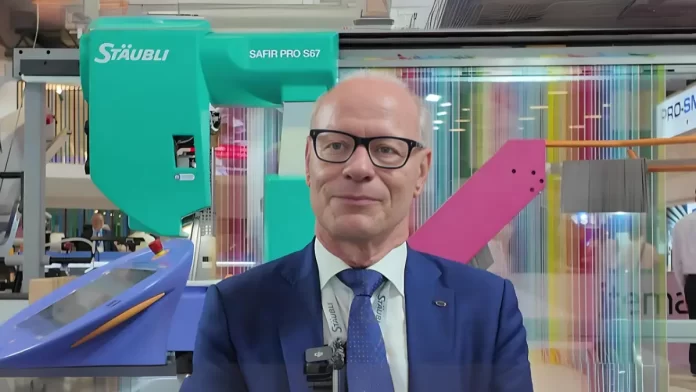Interview with Mr. Fritz Legler, Head of Marketing at STÄUBLI Textile During ITM 2024 Exhibition
Introduction of New Products
STÄUBLI Textile has unveiled several innovative products at this year’s ITM exhibition. Notably, the new high-speed automatic drawing-in machine, SAFIR Pro S67, has been launched. This machine is designed to meet high productivity and quality requirements in the market.
Turkey, along with the African market, has become increasingly important for STÄUBLI. Both regions are investing more in automation technology due to challenges in finding highly skilled labor. Automation, such as the automatic drawing-in machines, plays a significant role in addressing these challenges.
Additionally, STÄUBLI is showcasing the latest generation of high-speed dobbies, the S3280. This product aims to enhance productivity and sustainability in high-speed weaving. The company is also presenting the SX Pro, an extension of their Pro Line launched last year, targeting markets in Turkey, Africa, and the Middle East.
The Role of Automation in Textile-Based Economies
Automation is often seen as a threat to jobs in textile-dependent economies, but Mr. Legler does not view it as a conflict. He argues that automation makes sense for repetitive tasks, allowing skilled labor to focus on areas where human intervention is still crucial. For instance, tasks like drawing-in are complex, repetitive, and require continuous operation. Automation in these areas does not eliminate jobs but rather shifts the focus of labor to preparation, maintenance, and ensuring the smooth operation of automated processes.
Competing in the Textile Machinery Market
To stay competitive in the textile machinery market, STÄUBLI emphasizes the importance of being close to their customers and understanding their specific needs. This customer-centric approach allows the company to quickly develop innovative solutions that deliver tangible benefits. Despite the presence of many imitators in the market, STÄUBLI aims to stay ahead through innovation, speed, and maintaining strong customer relationships.
Carpet Weaving Machinery
Carpet weaving machinery is a crucial segment for STÄUBLI. Their flexible machines can handle different types of carpets on the same machine, providing significant advantages for their customers. The STÄUBLI and Schönherr brands are well-known and trusted in the market, offering alternatives with unique benefits compared to other brands.
Impact of Frequent Textile Machinery Exhibitions
The increasing frequency of textile machinery exhibitions has posed challenges for companies. Mr. Legler notes that the previous four-year cycle allowed enough time to analyze customer needs and prepare new solutions. However, the current expectation to present new machines at every exhibition is unrealistic and not beneficial for customers or manufacturers. Instead, STÄUBLI focuses on product refinements and optimizations to meet customer needs, rather than constantly introducing new machines.
Evaluating the Middle East and Africa Textile Market
The Middle East and Africa represent promising markets for STÄUBLI. Although investments in these regions may not always be on a large scale, there is consistent investment in countries like Benin, Nigeria, Kenya, and South Africa. North Africa also sees ongoing investments. These regions offer potential for future growth and development in the textile industry.
STÄUBLI’s Approach to Sustainability and Digitalization
Sustainability and digitalization are gaining importance in the textile industry. STÄUBLI is committed to providing solutions that reduce energy consumption and promote sustainability. For example, the new Pro Line of jacquard machines can reduce energy consumption by up to 30%. Similarly, the new automatic drawing-in machines are designed to consume less power than previous technologies.
STÄUBLI also focuses on the repairability and maintainability of their machines, ensuring they have a longer lifespan and a reduced environmental impact. This approach not only benefits the environment but also adds value for customers by extending the life of their machinery.




